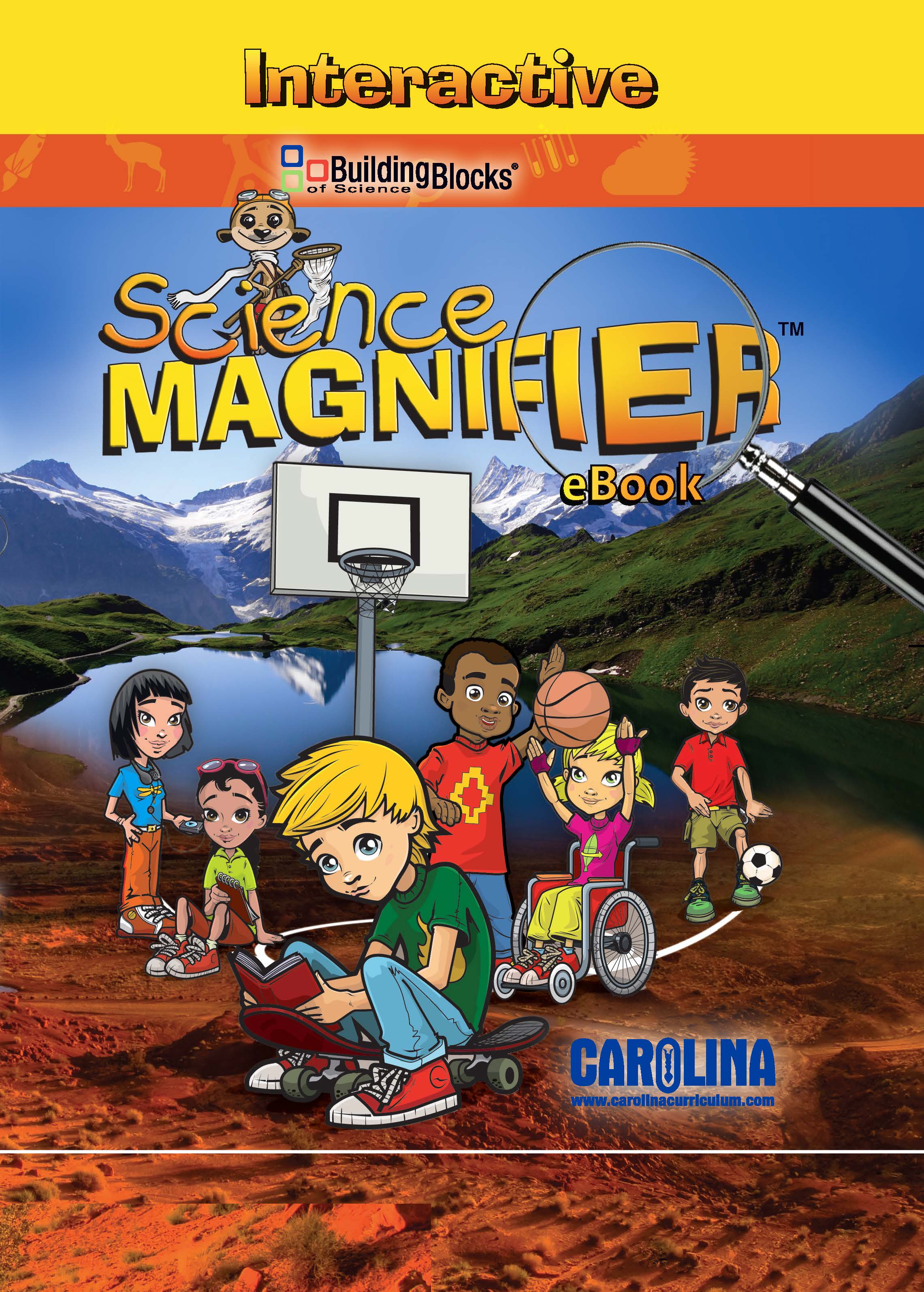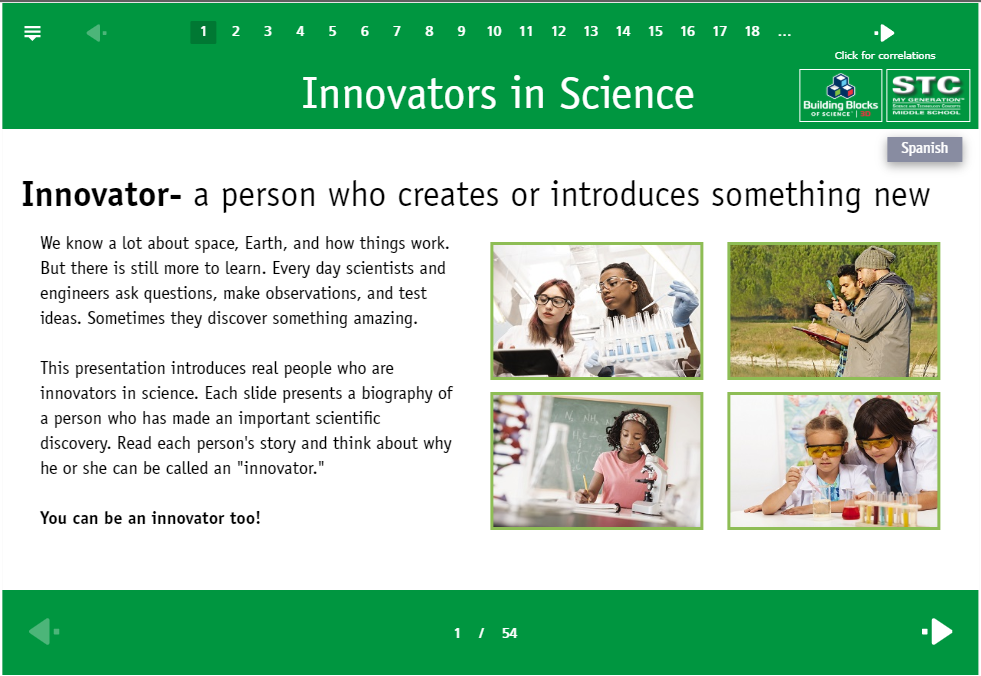My Cart
Your Shopping Cart is currently empty. Use Quick Order or Search to quickly add items to your order!
Products Suggestions:
Products suggessions:
Carolina Biological Supply Company is committed to supporting parents, teachers, and school districts with learn-from-home resources for remote learning environments. Explore the resources below for elementary and middle school students from Carolina’s Building Blocks of Science™ 3D, Innovators in Science, and Smithsonian Programs.

Click on the Smithsonian Resource links in the chart below to find resources that support the program's modules. Here you will find videos, activities, downloadables, articles from Smithsonian magazines, and more.
| Life Science | Earth and Space Science | Physical Science | Engineering Design | |
| Kindergarten | ||||
| What Do Plants and Animals Need to Live? Smithsonian Resources |
How Can We Be Ready for the Weather? Smithsonian Resources |
How Can We Change an Object’s Motion? Smithsonian Resources |
How Can We Stay Cool in the Sun? Smithsonian Resources |
|
| Grade 1 | ||||
| How Do Living Things Stay Safe and Grow? Smithsonian Resources |
How Can We Predict When the Sky Will Be Dark? Smithsonian Resources |
How Can We Light Our Way in the Dark? Smithsonian Resources |
How Can We Send a Message Using Sound? Smithsonian Resources |
|
| Grade 2 | ||||
| How Can We Find the Best Place for a Plant to Grow? Smithsonian Resources |
What Can Maps Tell Us About Land and Water on Earth? Smithsonian Resources |
How Can We Change Solids and Liquids? Smithsonian Resources |
How Can We Stop Soil from Washing Away? Smithsonian Resources |
|
| Grade 3 | ||||
| What Explains Similarities and Differences Between Organisms? Smithsonian Resources |
How Do Weather and Climate Affect Our Lives? Smithsonian Resources |
How Can We Predict Patterns of Motion? Smithsonian Resources |
How Can We Protect Animals When Their Habitat Changes? Smithsonian Resources |
|
| Grade 4 | ||||
| How Can Animals Use Their Senses to Communicate? Smithsonian Resources |
What Is Our Evidence That We Live on a Changing Earth? Smithsonian Resources |
How Does Motion Energy Change in a Collision? Smithsonian Resources |
How Can We Provide Energy to People’s Homes? Smithsonian Resources |
|
| Grade 5 | ||||
| How Can We Predict Change in Ecosystems? Smithsonian Resources |
How Can We Use the Sky to Navigate? Smithsonian Resources |
How Can We Identify Materials Based on Their Properties? Smithsonian Resources |
How Can We Provide Freshwater to Those in Need? Smithsonian Resources |
|
Click on the link below to discover additional free resources offered by the Smithsonian. Find educational videos, games, and more! https://www.smithsonianstc.com?subject=ssftc-resources
The Smithsonian Science Education Center has developed the following STEM resources to support “Distance Learning” needs for students in grades K-8. We designed this site for everyone—students, teachers, and caregivers. It includes standards-aligned educational games, simulations, videos, eBooks, and hands-on lessons that require simple materials found at home.
Learn More About Smithsonian Science for the Classroom

Click on the links in the chart below to access downloadable PDF card sets, downloadable and printable PDFs of Literacy Articles, Take-Home Science Activities, and Science in the News. Instructions for how to use these resources over the next several weeks are available using the Instruction links.
Support for Current Customers with Access to Carolina Science Online: If you're a current Building Blocks of Science educator who needs a refresher on using the resources you already have access to on Carolina Science Online, go to https://carolinascienceonline.com/#/help to view some tutorials. If you need additional help, reach out to cso_support@carolina.com.

Science Magnifier™ eBooks help students find out more about the science topics they are investigating while developing their math skills and literacy abilities related to informational text.
Click on the links below to open the eBooks. They're available in English and Spanish!
When using these links, do not create an account on Carolina Science Online.
Access English: https://carolinascienceonline.com/#/resource/science_magnifier_interactive_ebook/preview
Access Spanish: https://carolinascienceonline.com/#/resource/science_magnifier_interactive_ebook_esp/preview
Using the Science Magnifier: A Guide for Students
Science Activity Sheets for the embedded Science Magnifier™ activities.
Additional activities that go with Science Magnifier content.

This digital literacy and information resource houses a continually growing library of biographical readings about scientists from a variety of disciplines. Change the face of science for students as they read about scientists who are as diverse as they are and the valuable contributions each has made to society and science. (Use as a read-aloud for grades K-2)
When accessing this resource, do not create an account on Carolina Science Online.
Let your student select their favorite and conduct research to learn more. https://carolinascienceonline.com/#/resource/bbs_innovators_in_science/preview

Carolina offers many materials and activities that can be used outside the classroom. All should be used with adult supervision. For safety, users should follow all instructions and should not attempt to substitute or reuse materials unless the instructions say to do so. Supervising adults must review the activities provided, ensure they are appropriate for the student’s maturity level, and ensure all safety recommendations are followed by students. Safety is paramount whether at school or home.